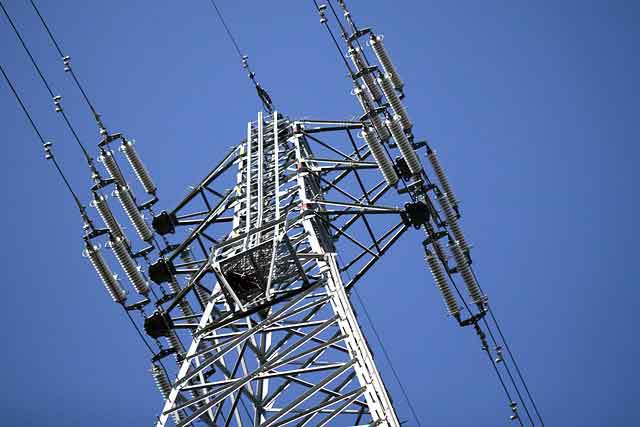Colorado utility's rebuff of Wyoming wind surprises
Xcel Energy released an evaluation last month of bids it received in response to a request for proposals to add nearly 1,000 megawatts of renewable energy for Colorado customers through 2015.
Wyoming wind and infrastructure developers were surprised to learn that Xcel's report rejected all bids from wind developers in southeast Wyoming.
Trans-Elect Development Company and the Wyoming Infrastructure Authority were among the parties that promoted Wyoming wind to Xcel.
The two are working together to develop the Wyoming-Colorado Intertie transmission project, a $3 million, 850-megawatt line proposed to run from southeast Wyoming to Colorado's populous front range. LS Power and the Western Area Power Administration are also involved in the project.
The two are working together to develop the Wyoming-Colorado Intertie transmission project, a $3 million, 850-megawatt line that would run from southeast Wyoming to Colorado's populous front range. LS Power owns the proposed line.
"We're surprised and we're disappointed but this is just the first skirmish in a long-term campaign," said Jerry Vaninetti, Trans-Elect's vice president of western development. "We still believe in the fundamentals of the project."
Wyoming state government has promoted southeast Wyoming as ripe for wind development because of its strong winds, willing landowners and minimal environmental conflicts. However, there's a shortage of transmission capacity to export energy from southeast Wyoming to markets like Colorado cities.
Steve Ellenbecker, the Wyoming Infrastructure Authority's director of governmental and external relations, said the Wyoming-Colorado Intertie is meant to alleviate that "bottleneck."
"It's there and (Xcel's decision) doesn't become a dispute about that fact," Ellenbecker said. "There's a need for opening up a pathway for the exchange of power between Wyoming and Colorado in either direction."
For Xcel's purposes, the southeast Wyoming wind bids weren't better than Colorado wind bids, according to the company's report.
"SE Wyoming wind bids were higher priced than the most economic Colorado wind bids and provided generation pattern data that appears no more favorable to the overall system than NE Colorado wind," the report said.
The report found that the Wyoming wind bids were comparable to Colorado's in terms of capacity factor, or a wind farm's productivity compared to its maximum potential. The Wyoming bids ranged from capacity factors of about 36 percent to 42 percent, while Colorado's ranged from about 32 percent to 45 percent.
Xcel's report also found that northeast Colorado wind farms historically have had better generation patterns, meaning they produce more of their annual electricity from the hours of 9 a.m. to 6 p.m. than the Wyoming bids would have.
Ellenbecker said he had hoped Xcel would advance the Wyoming wind bids to serve as a catalyst for both southeast Wyoming wind development and the Wyoming-Colorado Intertie.
"It looks like the advantage went to the resources that had the shorter transmission difference as a significant potential factor," Ellenbecker said.
Backers of the Wyoming-Colorado Intertie are curious to see what happens during the next couple of months as the Colorado Public Utilities Commission reviews Xcel's selection of new power supply sources.
"We're hopeful that there's a possibility Wyoming wind could get reconsidered during this 90-day period," Vaninetti said. "We're all dependent upon buyers in Colorado in buying both wind and the transmission services to deliver the wind."
Bob Whitton, a Wheatland rancher and chairman of the Renewable Energy Alliance of Landowners, said Xcel's exclusion of Wyoming bids won't deter his group's members from pursuing wind development leases on their lands.
"We've got 800,000 acres of ground in southeast Wyoming that could produce way more power at a pretty high capacity factor than the Wyoming-Colorado Intertie could possibly handle," Whitton said. "So our question is not 'can we get on the Wyoming-Colorado Intertie?' The question is 'where is the rest of the transmission going to come from because we need a lot more?'"
Related News

Nuclear plant workers cite lack of precautions around virus
HARTFORD - Workers at Connecticut's only nuclear power plant worry that managers are not taking enough precautions against the coronavirus after 750 temporary employees were brought in to help refuel one of the two active reactors.
Ten employees at the Millstone Power Station in Waterford have tested positive for the virus, and the arrival of the temporary workers alarms some of the permanent employees, The Day newspaper reported Sunday.
"Speaking specifically for the guard force, there's a lot of frustration, there's a lot of concern, and I would say there's anger," said Millstone security officer Jim Foley.
Foley, vice president of the local…





